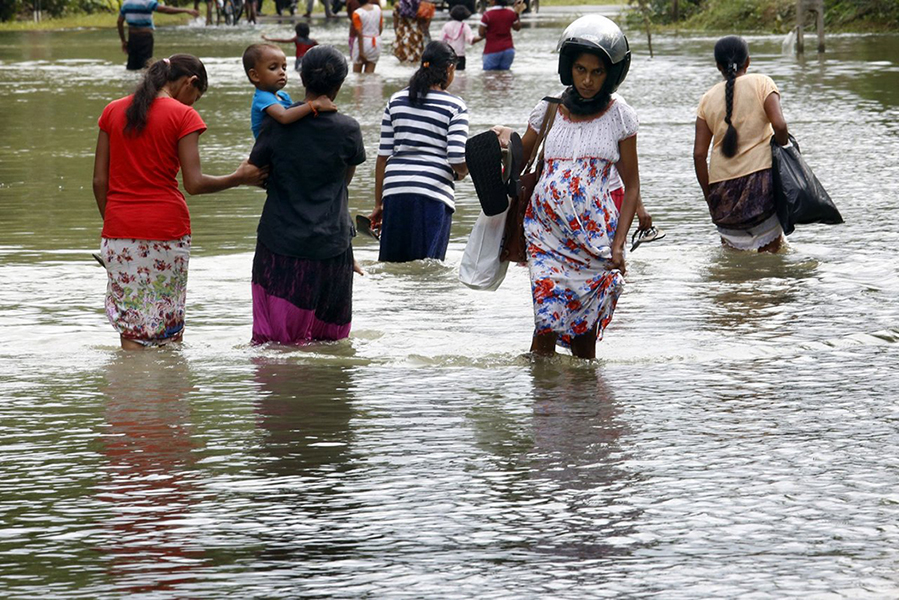The Sri Lankan monsoons this year struck the wrong chord when it hit the island with floods. Barely a year of grace from the disaster of 2016, this time almost 300 deaths and destruction of approximately 3000 houses have been recorded. Most of the short-term needs of the flood victims were met. Many individuals, organizations and nations joined hands in providing aid for the victims immediately. However reports indicate that there were some victims who were still left unaided.
Flood Relievers
Many prepared themselves almost immediately, with boxes piled and vans fully occupied.
- Youth Organizations like Youth Awareness Project and One Love Lanka
- School Organizations including but not limited to Social Service societies, Interact clubs and Prefects’ Guilds
School children geared to the aid of the thousands displaced and children with no homes to go back to and no meal to have that night. Various schools organized collection points to provide food and clothes for those in dire need.
Phones buzzed persistently with reminders from communication networks. Dialog sent hourly reminders to donate via their network with money or Star Points. Taxi service PickMe went on door to door flood relief collections making donations easier. Other private businesses also stepped up to fulfill their corporate social responsibility.
- Animal Welfare societies like Embark
One Facebook post requesting volunteers to rescue animals, resulted in a Whatsapp group of more than 60 people. Animal lovers jumped at the opportunity to rescue cats and dogs stuck in drains, on roofs and lost in the middle of rivers. Many fostered stray cats and dogs. The vets volunteered to sterilize the animals and treat their injuries.
- Armed Forces – Army, Navy and Air Force
State efforts were inadequate and slow but soon increased in terms of compensation and soft loans.
- Individuals and Foreign States
Around the globe contributions came via financial donations and some even traveled thousands of miles to volunteer with rescue and relief efforts. Australia, Singapore, USA and other countries too provided humanitarian aid. The influx of much needed resources was warmly welcomed.
While as much as many tried to save everyone, not everyone could be saved. Some lay in the dungeons of silence due to social stigmas.
Flood Victims
- Women
Sanitary napkins, pads, tampons, call it whatever you may, were scarcely donated. Menstruation is still taboo in Sri Lanka. Sanitary napkins are sold as if they are illicit drugs, wrapped in layers and layers of newspaper, inside approximately 3 plastic bags. Not having a change of pads or not wearing a pad at all can cause extreme discomfort, health issues and humiliation. Above all, it’s the emotional and physical discomfort that can really hurt women, particularly young girls.
- Stray animals
Many volunteered to foster stray dogs, but adoption was rare. Stray dogs are stigmatized as dirty. Many were even kicked out of their foster homes. The plight of Sri Lankan stray dogs is an ever persistent problem.
What does the future hold?
An overflow of donations, but is that enough? Many worry about the sustainability of the reliefs. Unanswered questions about thousands left homeless and importantly, what will happen next year? Will it be the same or will the government take constructive action towards disaster management?
Did you do your bit?
This time like never proved that every penny donated counts, big or small every donation you made helped relieve the pain. When disaster struck, it made no difference between castes or creeds, likewise nor did the flood relief programs differentiate in providing relief to the victims. It was evident that when we Sri Lankans unite we can face any disaster, natural or man-made with a heart of a lion.


